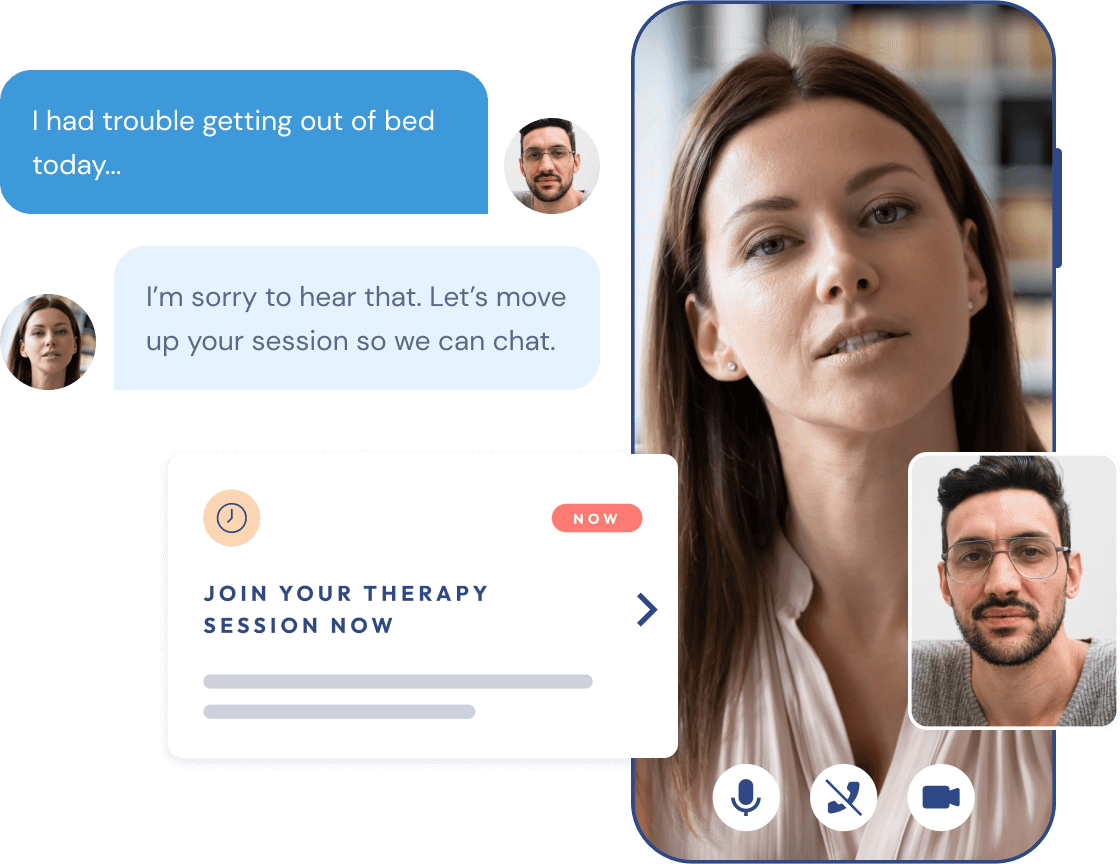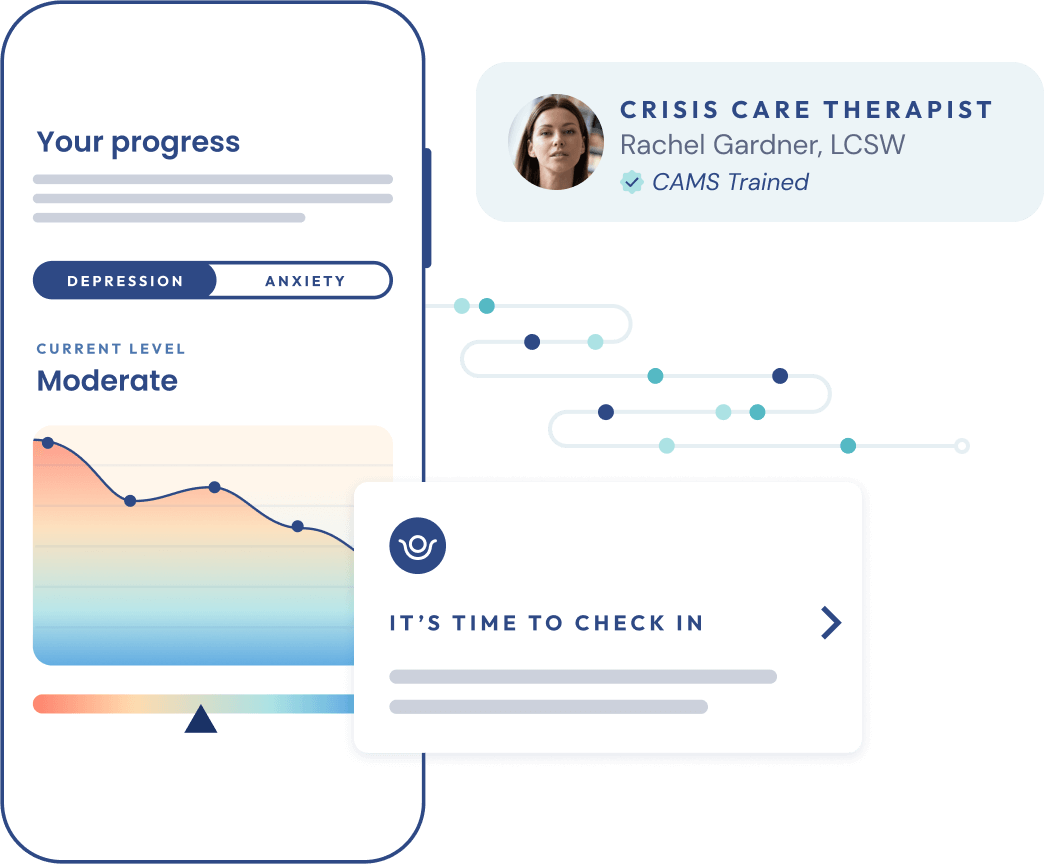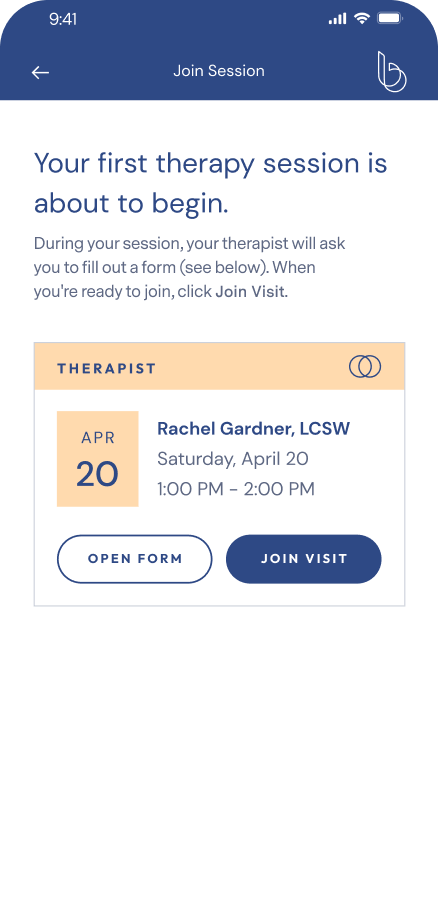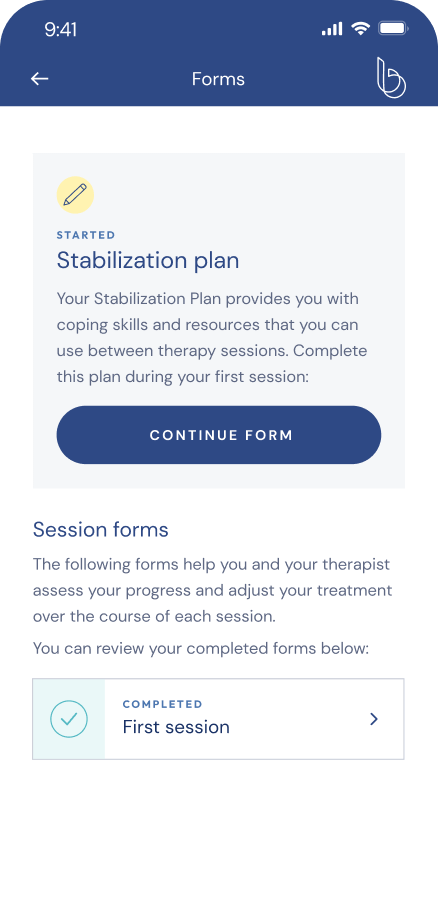Suicide Prevention Program
Life-saving care for
those who need it most
Our Suicide Prevention Program is a first-of-its-kind national telehealth program for treating individuals with elevated suicide risk.

Suicide Prevention Program
Our Suicide Prevention Program is a first-of-its-kind national telehealth program for treating individuals with elevated suicide risk.

We offer affordable care for everyone and accept most major insurance, including Medicare and Medicaid.
Learn more






Introducing Suicide Prevention
For far too long, individuals with elevated suicide risk have been left behind by our healthcare system. Our Suicide Prevention Program was created to provide this vulnerable population with timely access to specialized care, and help reverse the staggering national statistics on suicide.
36,164people consider suicide
4,383people attempt suicide
132people die by suicide


WHO IT’S FOR
We fill the critical gap between routine services & the emergency room, providing specialized care for individuals experiencing elevated suicidal thoughts and behaviors.

Our Suicide Prevention Program is not for individuals who are at imminent risk of harm and require emergency services.
THE CAMS FRAMEWORK
Our Suicide Prevention Program is built on the Collaborative Assessment and Management of Suicidality (CAMS) framework, a proven program backed by 5 randomized controlled trials.
CAMS utilizes multipurpose tools to identify, target, and treat patient-identified suicidal drivers and triggers.
The CAMS framework decreases suicide attempts and self-harm behaviors in as few as 6 to 8 sessions.
CAMS is recognized by the CDC, Joint Commission, Zero Suicide, and the Surgeon General.
OUR APPROACH
We’ve fully integrated the CAMS framework into our care model and technology platform, resulting in the most powerful, effective treatment program for our patients.
Patients with elevated suicide risk access specialized treatment quickly and begin a structured, time-limited program that lasts between 4-12 weeks.
Our program requires the patient to be actively involved in their treatment—from video sessions & messaging, to the documentation of suicide-focused treatment & safety plans.


Patients are matched with a dedicated CAMS-trained clinician, who is supported by clinical leaders who are experts in suicide intervention and prevention.
Our Suicide Prevention program provides escalation pathways to follow-up treatment when a patient requires a higher level of care, as well as step-down pathways once the patient is no longer at risk.
If clinically appropriate for a patient’s treatment, our psychiatric providers leverage our PrecisionRx tool to pinpoint the most tolerable & effective medication/dose combination.

how it works
Patients and their dedicated clinicians are partners in getting better, with active collaboration powered by technology at every step.






Let your provider know how you’re feeling, get to know you, and provide 1:1 support.

Let your provider know how you’re feeling, get to know you, and provide 1:1 support.

Let your provider know how you’re feeling, get to know you, and provide 1:1 support.

Let your provider know how you’re feeling, get to know you, and provide 1:1 support.

Let your provider know how you’re feeling, get to know you, and provide 1:1 support.

OUR PREMIUM CLINICIAN NETWORK

FREQUENTLY ASKED QUESTIONS
If your question isn’t answered below, contact us for more information.
Our Suicide Prevention Program is specifically designed for individuals with elevated suicide risk, including those who are actively suicidal and/or have had a recent suicide attempt, and those in need of follow-up care after hospitalization. This program delivers medically necessary care to patients who are often excluded from outpatient treatment (both in-person or telehealth) because of elevated risk.
Our program is not designed for individuals who require emergency services and/or psychiatric facility admission, nor those with primary substance use disorder, psychotic disorders, and severe personality disorders.
New patients with participating insurance who meet the eligibility requirements can enroll directly upon completing our free intake assessment. New patients can also be referred by their healthcare provider. Existing Brightside patients who receive routine services can be directly enrolled in the program by their Brightside clinician, if they develop elevated suicide risk.
While it can take weeks to get an in-person appointment, patients can see a Suicide Prevention Program clinician in 48 hours or less.
Patients will be assigned to a CAMS-trained clinician within Brightside Health’s network who will conduct a thorough 60-minute intake evaluation to understand the patient’s level of suicidal ideation, history of suicidality, risk, and protective factors. If the clinician indicates the patient is appropriate for the Suicide Prevention Program, intervention will begin immediately.
Brightside developed the Suicide Prevention Program using the Collaborative Assessment and Management of Suicidality (CAMS) framework to identify and address suicidal behavior and suicide drivers. The CAMS approach is highly collaborative between patient and clinician, and employs a series of versatile tools, including the Suicide Status Form (SSF), which provides means for:
We fully integrated CAMS into our virtual care model and enhanced it with technology. We facilitate every aspect of the program in live 1:1 video sessions, and supplement it with ongoing engagement tools like direct messaging and proactive progress tracking. Our SmartEMR also offers streamlined CAMS documentation for clinicians so they access advanced tracking to monitor suicide risk and treatment progress.
If the patient is not eligible for our Suicide Prevention Program, we provide them with resources so they can get the appropriate care for their needs.
Patients enrolled in our program will have weekly—or more frequent—live 1:1 video sessions with their dedicated CAMS-trained clinician, direct messaging between sessions, and proactive progress tracking to view their progress over time.
Everything we do at Brightside Health is backed by evidence, and our Suicide Prevention Program is no exception. We looked for the gold standard approach with proven results and found it in CAMS—one of a handful of evidence-based treatments recognized by the CDC, Joint Commission, Zero Suicide, and the Surgeon General. Based on 30 years of ongoing clinical research and five randomized controlled trials, CAMS has been proven to decrease suicide attempts and self-harm behaviors, and reduce suicidal ideation, in as few as 6 to 8 sessions.
Patients can actively participate in our Suicide Prevention Program for up to 12 weeks, with a minimum requirement of 4 weeks. Once a clinician determines it is safe to do so, a patient can transition to routine services for ongoing management of symptoms. Patients who successfully achieve treatment goals in the program, and are appropriate for continuation of services via telehealth, are offered mental health treatment through Brightside’s therapy and/or psychiatry programs.
Brightside Health has a premium network of clinicians in all 50 states, many of whom have experience managing suicidality and/or have worked in high acuity settings. Every Suicide Prevention Program clinician has undergone rigorous vetting and received CAMS training. They also are supported with weekly consultation meetings, supervision, and one-on-one meetings with clinical leaders who are experts in suicide intervention and prevention.
Similar to Brightside Health’s care model for other mental health concerns, a combination of therapy and medication is available if a clinician determines it is appropriate and in the best interest of the patient.
Currently, our Suicide Prevention Program is available to individuals with insurance. Brightside Health currently accepts a variety of insurance plans that together cover 130 million lives and counting.
Our the Suicide Prevention Program is currently available in limited states, with a complete national rollout coming soon.